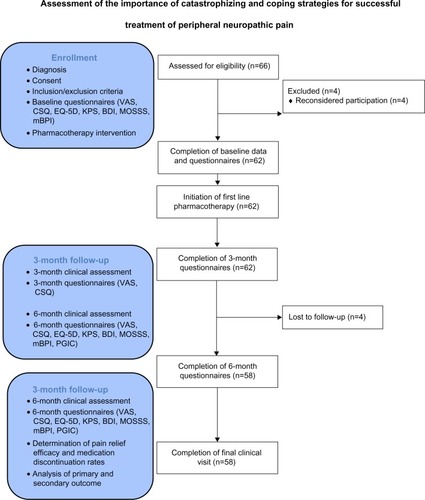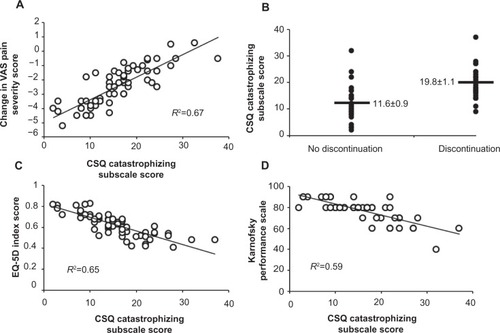Figures & data
Table 1 Coping strategies questionnaire catastrophizing subscale items
Figure 1 The CONSORT flow diagram for patients evaluated in this study.

Table 2 Patient characteristics for all patients enrolled to determine catastrophizing or coping skills
Table 3 Medication interventions provided to patients
Figure 2 Correlational analyses for the Coping Strategies Questionnaire (CSQ) catastrophizing subscale score are demonstrated.

Table 4 Coping strategies questionnaire subscale results
Table 5 There were significant correlations between the catastrophizing subscale score of the coping strategies questionnaire and with medication discontinuance and medication success
Figure 3 Patient global impression of change (PGIC) was reported at the 6-month time-point, demonstrating significantly less perceived benefit for scores obtained from “high” catastrophizers (A) as compared to “low” catastrophizers (C) (modified ridit transformation with the Cochran–Mantel–Haenszel procedure, adjusting for center, *P<0.05), with “medium” catastrophizers shown in (B). There were no significant differences between “high” and “medium” catastrophizers, or between “low” and “medium” catastrophizers.

